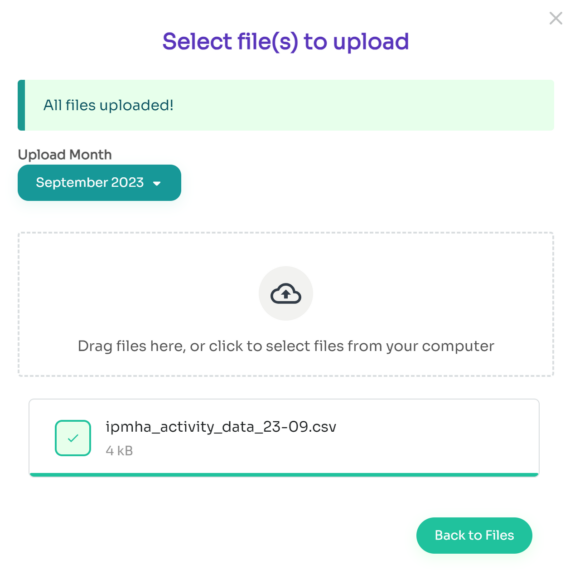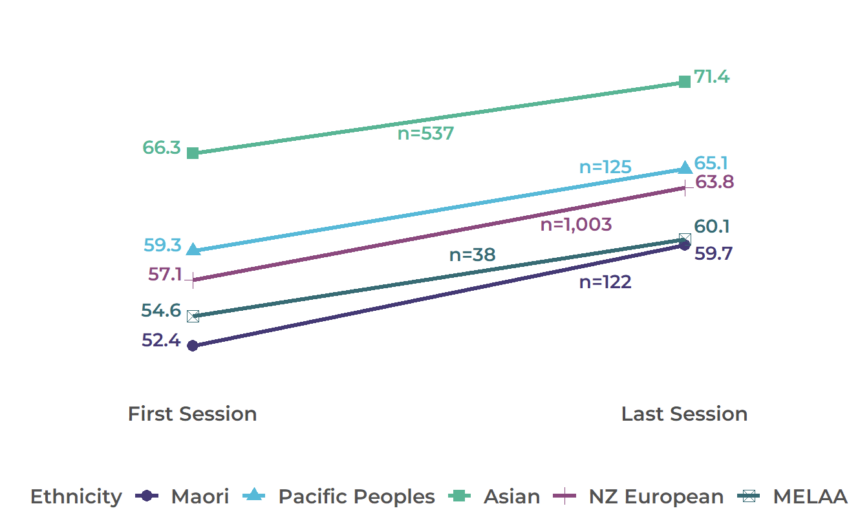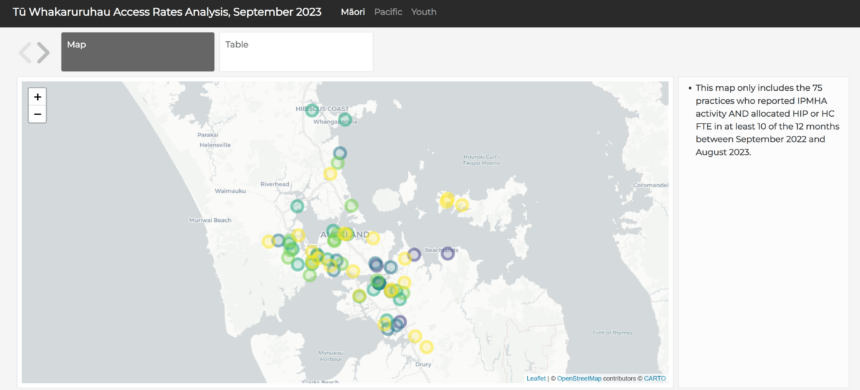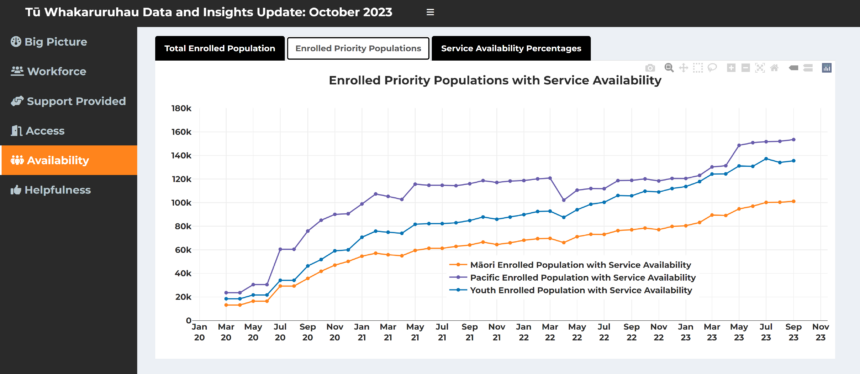Amplifying Impact: The Role of Synergia’s Data Hub in Transforming Primary Mental Health Services.
- Client
- Tu Whakaruruhau - Auckland Wellbeing Collaborative
- Skills
- Implementation, change management, data analysis, visualisation, programme management
Synergia serves as the central data hub for Tū Whakaruruhau, orchestrating data flows and providing analytical insights across the complex network of mental health service providers. In this role, we have built a robust, comprehensive approach to streamlining the data pipeline, reporting, and analysis for AWC.

Background
Tū Whakaruruhau (also known as the Auckland Wellbeing Collaborative [AWC]) is a network of 22 mental health service providers implementing an innovative new primary mental health model: Integrated Primary Mental Health and Addiction (IPMHA) services. Synergia serves as the central data hub for Tū Whakaruruhau, orchestrating data flows and providing analytical insights across the complex network of mental health service providers. In this role, we have built a robust, comprehensive approach to streamlining the data pipeline, reporting, and analysis for AWC.
Challenges
Tū Whakaruruhau faces several challenges with its data:
- Fragmentation: How do you standardise and integrate 35 diverse datasets from 22 different service providers?
- Access Control: How can sensitive NHI-level data be uploaded securely into a robust data warehouse?
- Reporting: How do you process dozens of different datasets efficiently and streamline reporting to Te Whatu Ora (Health NZ) in compliance with their multifaceted requirements?
- Real-Time Metrics: What are the key, month-to-month metrics that indicate successful service delivery? How do you utilise those metrics to advance quality improvements? How do you securely and effectively share those metrics with a multitude of providers and stakeholders in a format that is accessible across all organisations?
- Advanced Analytics: How do you wrangle, transform, and visualise the diverse datasets to explore more complex questions such as:
- Are service users showing any change in wellbeing (as measured by the Hua Oranga or Duke wellbeing measures) from the beginning to the end of an ‘episode of use’? If there are indications that their wellbeing has changed, are those changes statistically and/or clinically significant? Do patterns of outcomes vary by ethnicity?
- Taking into account each practices employed FTEs, admin and leave time, and working days in a month, how many sessions per day are being provided by the GP practices offering IPMHA services? What can we learn from those practices that deliver many sessions per day, as well as those that are delivering fewer sessions per day?
- Communicating insights: Utilising data, how do you tell the story of Tū Whakaruruhau’s impact in a way that is accurate, useful, and accessible for all stakeholders?
Solutions
- Data Integration in the ‘Vault’:
- Synergia custom built a secure data upload ‘Vault’ for robust data storage of NHI-level data across the entire Collaborative.

- Data Processing and Reporting:
- Sophisticated data pipeline scripts were developed using Python and R to collate, clean, and standardise the various datasets, and then generate automated reports in compliance with Te Whatu Ora’s requirements.
- Real-Time Metrics and Insight Sharing:
- A bespoke R Shiny dashboard was built to track key metrics and provide a data platform easily accessed by providers and stakeholders across Tāmaki Makaurau.

- Advanced Analytics:
- Synergia created data analysis scripts to perform advanced statistical analyses involving complex data wrangling, transformation, visualisation, and inferential biostatistics in R.

Outcomes
- Unified Data → Streamlined Reporting à More Powerful Analysis and Insights: As the Collaborative has expanded to more than 115 GP practices serving an enrolled population of nearly 800,000 whaiora across Tāmaki Makaurau, the automation of the Collaborative’s data pipeline has enabled deeper, more sophisticated statistical analyses.
- Ex: One of Tū Whakaruruhau’s primary goals is to maximise access to IPMHA services for its priority populations: Māori, Pacific, and youth. To this end, Synergia has developed maps showing access rates by GP practice across Tāmaki Makaurau. The Tū Whakaruruhau Enablement Team is using these maps to identify which practices and localities have been most successful in programme outreach, which require additional resources to expand access for their priority populations, and where outreach efforts might be effectively clustered.

- Data-Driven Decision Making: Comprehensive statistical analyses, especially related to wellbeing outcomes for priority populations, have resulted in actionable insights driving service delivery improvements.
- Ex: Analysis of pre and post Hua Oranga wellbeing measures for service users accessing various support roles within the IPMHA service model revealed that those who saw two different support roles within the same ‘episode of use’ experienced worse outcomes than those accessing just one support worker; the difference was statistically significant. This suggests that continuity of care may be paramount in the effective delivery of these primary mental health services, as opposed to access to multiple different support kaimahi.
- Secure & Segmented Access: The custom-built ‘Vault’ now serves as a robust, secure repository for each provider’s NHI-level data.
- Accessible Analytics: Real-time metrics are readily available to stakeholders via the R Shiny dashboard, which is accessible via a password-protected webpage.


